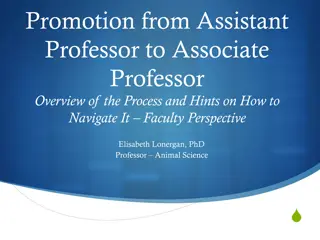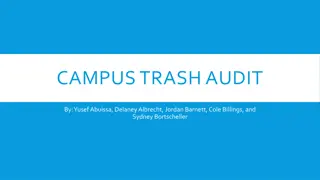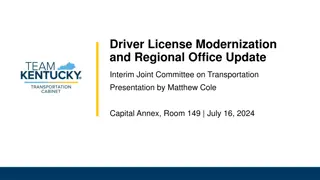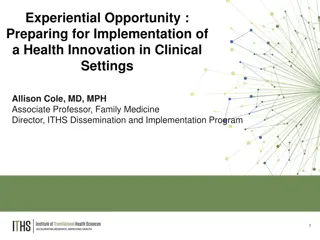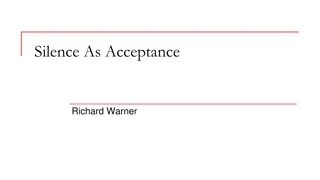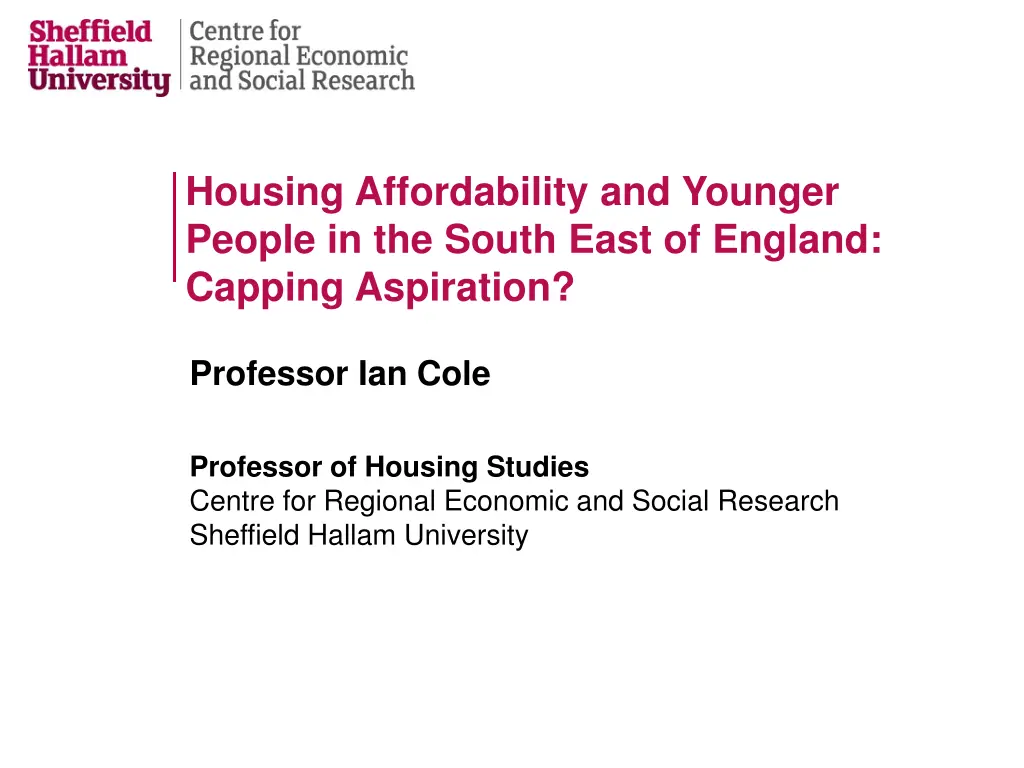
Addressing Housing Affordability Challenges for Young Adults in the South East
Explore the implications of housing affordability on the aspirations of younger individuals in the South East of England. Delve into the extension of the Help to Buy scheme, additional investment in affordable housing, and the future of social housing through a Green paper. Understand the voting behavior among different age groups and the emerging divide in generation rent. How can we solve the housing challenges faced by the under 35s?
Download Presentation

Please find below an Image/Link to download the presentation.
The content on the website is provided AS IS for your information and personal use only. It may not be sold, licensed, or shared on other websites without obtaining consent from the author. If you encounter any issues during the download, it is possible that the publisher has removed the file from their server.
You are allowed to download the files provided on this website for personal or commercial use, subject to the condition that they are used lawfully. All files are the property of their respective owners.
The content on the website is provided AS IS for your information and personal use only. It may not be sold, licensed, or shared on other websites without obtaining consent from the author.
E N D
Presentation Transcript
Housing Affordability and Younger People in the South East of England: Capping Aspiration? Professor Ian Cole Professor of Housing Studies Centre for Regional Economic and Social Research Sheffield Hallam University
Questions for today why was an extension of the Help to Buy scheme announced by Philip Hammond on Sunday? why did Theresa May announce, eventually, 2bn additional investment in affordable housing on Wednesday? why is there going to be a Green paper taking a positive view towards the future of social housing? why was a positive rent settlement for social landlords from 2020 announced yesterday? not too difficult to find the answers How do you solve a problem like the under35s? Ashford 6 October 2017
How do you solve a problem like the under35s? Ashford 6 October 2017
Vote Share: 18 to 24 year olds Vote Share: 18 to 24 year olds 70 60 50 Percentage of vote 40 30 20 10 0 2010 2015 2017 Conservative Labour
Vote Share: 25 to 34 year olds Vote Share: 25 to 34 year olds 60 50 40 Percentage of vote 30 20 10 0 2010 2015 2017 Conservative Labour
Vote Share: 65 years old and over Vote Share: 65 years old and over 70 60 50 Percentage of vote 40 30 20 10 0 2010 2015 2017 Conservative Labour
The new divide age now as important a determinant of voting behaviour than social class, income or ethnicity and the clock is ticking... generation rent decided to vote this time, after Brexit result financial crisis of 2007/8 especially affects those without assets with little income uplift in past ten years and baby boomers have been cosseted How do you solve a problem like the under35s? Ashford 6 October 2017
The lucky ones How do you solve a problem like the under35s? Ashford 6 October 2017
The unlucky ones How do you solve a problem like the under35s? Ashford 6 October 2017
An intergenerational comparison Issue Chance of being a home owner Average age of first time buyer Average age for having first child How long it takes to save for a deposit on average Proportion of income spent on housing on average Me 62% 30 25 Bryony 36% 34 29 3 years 19 years 10% 18% How do you solve a problem like the under35s? Ashford 6 October 2017
Regional stretch in house prices 1980 1.75 2016 3.19 Ratio of Greater London house prices to Yorkshire and Humberside prices Ratio of Rest of South East house prices to Y and H house prices 1.68 2.06 How do you solve a problem like the under35s? Ashford 6 October 2017
Capping Aspiration - approach to analysis assessment of secondary data sources in South East qualitative assessment of younger people's housing needs assessment of housing association responses to the challenges facing younger people How do you solve a problem like the under35s? Ashford 6 October 2017
Context - high and rising private sector housing costs House prices have increased by more than twice the national average, and private sector rents have risen more than in any other region (including London) since 2016. Median rents are 850pcm in the SE compared with 650pcm nationally PRS, typically the 'ready access' sector, is unaffordable for many: 51% of 16-34 year olds cannot afford lower quartile private sector rents; 76% cannot afford rents at the 50th percentile. How do you solve a problem like the under35s? Ashford 6 October 2017
Context - incomes not keeping pace with rising housing costs Disposable household income in the South East increased by just 1% from 2013 to 2014 - lower than UK average - despite strong economic growth 23% of younger households (ie. headed by a 16-35 yr old) are claiming HB or UC higher unemployment rate for younger people (7% compared with 4% of other age groups) How do you solve a problem like the under35s? Ashford 6 October 2017
Does social housing sector still cater for lower income households? Survey of Flagship Housing Group tenants (n=2628): The majority (57%) have a gross h/h income of less than 15,600 pa Survey of social housing tenants in the VRtB pilot areas (n=668) and application form data (c300) 42% have gross h/h income of less than 26k 30% have no savings Baseline survey of 1,600 social housing tenants in the DPDP areas for DWP (2015) Only 10% of tenants had any savings 55% had 'very often' or 'fairly often' run out of money in the past 12 months How do you solve a problem like the under35s? Ashford 6 October 2017
Social tenants: living on the edge Significant proportion of social housing tenants report 'just about' or 'not quite' managing (e.g. 50% of Flagship tenants)1 32% of tenants were assessed as 'at risk' of unaffordable rent in 2016 and 6% had unaffordable rent This combined total of 38% increases to 49% with the introduction of direct payment The estimated financial loss to h/hs in GB arising from post 2015 welfare reforms is 12.3bn per year to 20212 nearly half of these losses fall on working age households in the social rented sector2 1. See also survey results reported in https://www.gov.uk/government/uploads/system/uploads/attachment_data/file/388561/rr889-direct-payment- demonstration-projects-longitudinal-survey-of-tenants.pdf; and http://shura.shu.ac.uk/14923/1/CRESR_VRTB_pilot_research_- _main_report.pdf_dm_i%3D3R33%2C53DS%2C11XSI5%2CH05V%2C1 in addition to Flagship research results 2. Analysis conducted by CRESR for Crisis (unpublished) How do you solve a problem like the under35s? Ashford 6 October 2017
Can social rented sector take the strain in housing low income younger people? younger people represent 20% of social housing tenants in the South East HAs accommodate 60% of younger people on HB in the region introduction of LHA rates into social housing brings with it the shared accommodation rate (SAR) which represents a key challenge, given the limited (almost non-existent) supply of shared housing in the sector How do you solve a problem like the under35s? Ashford 6 October 2017
Impact of the SAR once the SAR is introduced, social housing rents in the South East will become unaffordable for most younger people 84% of existing single tenants would have a shortfall if the SAR were applied to their current claim. the average weekly shortfall between HB and social rent across the South East would be 55. This would leave a job seeker in the 16 24 age group with 2.79 a week to cover all living costs. the average weekly shortfall rises to as much as 77.60 in some areas How do you solve a problem like the under35s? Ashford 6 October 2017
Challenges the (convenient) presumption in favour of sharing in welfare policy is not matched by available stock in the social rented sector (SRS) existing models of shared housing and low cost self-contained products in the SRS cannot be let at the SAR and be financially viable HA properties and management arrangements reflect long- standing housing priorities. Will they be able to adapt and prioritise the disparate under 35s group? little appetite in the sector for developing shared housing, but some initiatives have been introduced but little appetite for shared housing among younger people, too 'my own space...that's what I want out of life, a place of my own to call home, not my mum's house or my cousin's house' How do you solve a problem like the under35s? Ashford 6 October 2017
Younger People's Housing Aspirations Housing association preferable to the PRS costs better management better standards tenancy security Strong desire for self-contained accommodation regardless of space standards... ...but location still important Reticence about sharing: More pronounced for some groups than others More positive feedback for 'managed' models of sharing Strong ownership aspirations for some groups Absence of decent housing advice and support and often poor experiences when approaching LA for help How do you solve a problem like the under35s? Ashford 6 October 2017
Younger People's Housing Aspirations so what can be done? How do you solve a problem like the under35s? Ashford 6 October 2017
Meeting younger people's housing needs - some broad approaches and options remodel existing stock (from 1 bed flats to tower blocks) to provide shared accommodation new development/purchasing of shared accommodation develop low cost self-containedaccommodation use partnerships (e.g. support agencies; private landlords) self-contained vs shared self financing vs (cross) subsidised new development vs remodel general needs vs extra support How do you solve a problem like the under35s? Ashford 6 October 2017
Specific models / schemes Y:Cube scheme (YMCA) in Merton Richardson Yard container housing (Brighton Housing Trust) in Brighton Low-cost self- contained housing, Snugbug (St Vincents) in Manchester Enfield Single Housing (Origin Housing) A midlands ALMO's shared accommodation pilot Shared houses and flats Larger shared housing schemes Lea Bridge House (Paradigm Housing Group) in Leyton South Yorkshire Housing Association and a 'Help to Rent' scheme (Nomad Opening Doors) Partnerships How do you solve a problem like the under35s? Ashford 6 October 2017
Y:Cube How do you solve a problem like the under35s? Ashford 6 October 2017
Y:Cube interior How do you solve a problem like the under35s? Ashford 6 October 2017
Y:Cube relatively low cost. 30k exc. land (scheme= 2.3m for 37 units) 5 months 'build' time will pay for itself after 14 years at current rent levels 28 sq metres (below minimum LA space standards) no exceptional maintenance and management costs tenants on AST (can't be permanent) very popular with tenants/applicants compares favourably to containers? Some important details rents are 148pw inc. service charge (SAR is 82.46 and 1 bed LHA rate 167.24) - but could be let for less? targeted at tenants who are working or in education leading to work with no/low support needs. Marketed as 'aspirational housing' How do you solve a problem like the under35s? Ashford 6 October 2017
Lea Bridge House How do you solve a problem like the under35s? Ashford 6 October 2017
Lea Bridge House - shared housing at scale tower block +annexes; 229 'bed spaces'; around 14 tenants per floor, some share kitchen and bathroom, 106 rooms have small en- suite shower and toilet for (non-stat) single homeless people over 25 referred by agencies working with homeless people very high demand did use ASTs but tenants now on licenses dedicated housing management team, staff presence on site no specific HM problems (more problems in smaller shared houses) no additional measures in place (lead tenants, training etc) financially viable Some important details rents are within the 1 bed LHA rate but nearly double the SAR financially viable because of the scale do not accept tenants thought to pose a problem for others How do you solve a problem like the under35s? Ashford 6 October 2017
Shared houses and flats Snug Bug (Manchester) 60 4-bed shared houses (their own and leased from other HAs) weekly visits from SnugBug coordinator and a 24 hour 'ranger' support service pre tenancy training rent set within the SAR Enfield Single Housing 305 units with 2 or 5 sharers (inc. 1 bed properties); some dispersed but many concentrated on one estate rents over the SAR (average c. 113, SAR is c. 91) tenants on licenses 2 shares reported to work better from a HM perspective, but 5 shares better financially tenant matching, and advice and support offered How do you solve a problem like the under35s? Ashford 6 October 2017
Partnerships South Yorkshire Housing Association and Nomad Opening Doors SYHA makes properties available to a local 'Help to Rent' scheme Nomad uses the properties to accommodate under 35s in 'non- priority' need SYHA provide landlord services, Nomad provides intensive tenancy support (includes 'matching' tenants) shared housing - 2 or 3 sharers mainly non-standard properties, some leased from the PRS classed as exempted properties, and so tenants received enhanced HB How do you solve a problem like the under35s? Ashford 6 October 2017
Conclusion fault lines in housing market are increasingly marked by age than by tenure or locality for under 35s, not just affordability but type and quality of accommodation specialist provision for younger people so far - a mix of opportunism, experimentation and improvisation less evidence of a strategic approach to meet their needs, akin to an older person's strategy think in terms of a spectrum of support and provision, both shared and self-contained as the cohort contains immense socio-demographic and financial diversity explore options for partnership with local authorities and others over assets (eg land) How do you solve a problem like the under35s? Ashford 6 October 2017
Conclusion 'The development of an evidence-based, intelligent and flexible strategy to meet the housing needs of those under 35 will not in itself mitigate the deepening crisis that many.. will face in the next few years: but it may help to stimulate the introduction and development of many more innovatory and creative schemes, whether as one-off experiments or integrated within mainstream budgets, partnerships and development programmes' (Capping Aspiration: p38) Otherwise there will be continued intergenerational conflicts.. Rather than intergenerational harmony, like this..... How do you solve a problem like the under35s? Ashford 6 October 2017
How do you solve a problem like the under35s? Ashford 6 October 2017
The report Capping Aspiration - the Millennial Housing Challenge (2017). Ian Cole, Stephen Green, Ben Pattison, Kesia Reeve, Ian Wilson, Tom Archer CRESR Report for CASE/Sovereign HA http://www4.shu.ac.uk/research/cresr/sites/shu.ac.uk/fi les/capping-aspirations-the-millennial-housing- challenge.pdf How do you solve a problem like the under35s? Ashford 6 October 2017









